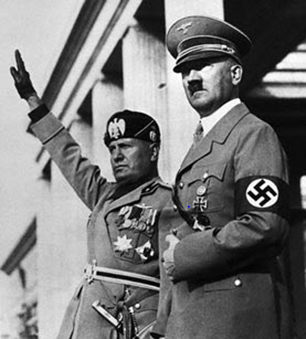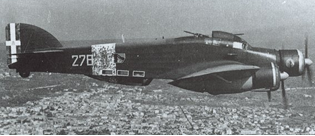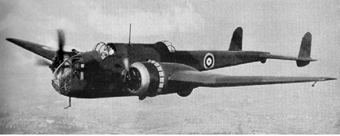Grande Fantasia Imperiale
The New Roman Empire vs. the British Empire, 1940
A Wavell’s War Hypothetical Historical Scenario
by John M. Astell
Copyright 2013. All rights reserved. Do not distribute in any form without express permission of the author!
- Part 1: Introduction
- Part 2: Rules
- Part 3: Orders of Battles
- Part 4: Final Notes
About Hypothetical Historical Scenarios
“Hypothetical historical” scenarios explore potential World War II campaigns that did not occur but could reasonably have done so. The scenarios use historical forces and limitations but assume one or more of the belligerents pursued a different strategy than historical. These scenarios thus allow speculation on what a side “could have done” or “should have done” to be explored within the framework of the Europa system.
Please Consider Donating
This scenario is free to use for personal use. If you enjoy the scenario, please consider making a small donation. Thank you!
Introduction

Fascist Italy under “Il Duce” Benito Mussolini and Nazi Germany under “Der Führer” Adolf Hitler signed a treaty of friendship on 25 October 1936. In a speech a few days later on 1 November in Milan, Mussolini said the treaty created a “Rome-Berlin Axis.” On 22 May 1939, Italy and Germany deepened the agreement with a pact of friendship and alliance between the two nations, called the “Pact of Steel.” Terms of the pact included called for mutual military assistance should either power go to war, wartime military and economic cooperation, and communication and coordination of the countries’ common interests.
Fortunately, the alliance was mainly for show, and each country continued to pursue its own individual interests, with little communication or coordination of their foreign policies. When France and Britain declared war on Germany after the German invasion of Poland, Italy remained neutral, only joining Germany in the war when German forces were on the verge of victory in France in June 1940. Even once in the war together, both countries continued to follow separate paths, often not informing one another of their intentions. Only after a string of Italian defeats in Greece, Libya, and East Africa in 1940-41 did the two Axis nations start working together as more than token allies.
Militarily, Italy resembled its alliance: it looked better on paper than in practice. Some examples are:
- The Italian army was large, but appearance belied reality. Italy had increased its total number of infantry divisions by organizing them with two infantry regiments instead of three. This binary structure reduced their combat power in comparison to other countries’ trinary infantry divisions. (The Italians later attached Fascist Party Blackshirt troops to many divisions, but most of these troops were of quite poor quality and so didn’t compensate for the binary structure.) For another example, many of the army’s weapons were obsolescent or obsolete designs from World War I. While the Italians did have some modern, excellent weapons, there weren’t enough of them.
- The Italian armored division had a good, balanced organization, unlike many early-war armored divisions, but Italy could only field a handful of them. Despite their organization, they were weak because of their poor tanks. Italian tank design and production was deficient. Italian “medium” tanks were underarmed and under-armored, among other defects, and were obsolete when compared to contemporary medium tanks of other countries. Nor could Italy build many of them, so the bulk of Italian armor consisted of light tanks. Most Italian light tanks were also deficient when compare to other country’s light tanks, so Italian armored forces never were able to contribute to the degree that German, Soviet, British, and American armored forces did in the war.
- The Italian navy had many fine warships—but tight fuel supplies tended to constrain the fleet’s operations. Also, British control of Gibraltar and the Suez Canal together with the power of the Royal Navy mostly confined the Italian Navy to the Mediterranean Sea.
- The Italian air force was large on paper, but many aircraft simply could not fly. Deficiencies and poor decisions rendered the remaining aircraft less capable than those of other powers. For example, many Italian aircraft engines were underpowered, resulting in Italian medium bombers needing three engines when comparable bombers of other nations only had two. The third engine added extra weight, reducing payload, and its placement on the nose of the bomber—the best position for bombardiers—reduced the aircraft’s bomb-aiming ability. (See Italian SM.79 vs. British Hampden Mark I below.) Italy could easily have licensed powerful engines from Germany at any time once the Rome-Berlin Axis was formed, but this step waited until 1940. German engines immediately improved the performance Italian aircraft, but it was a case of too little too late.
Italian SM.79-I vs. British Hampden Mark I
The comparison of these two medium bombers both developed in the mid 1930s shows some of the problems of the Italian aircraft industry. (Numbers are rounded off to concentrate on the big picture.)
Feature |
SM.79-I |
Hampden Mk. I |
|---|---|---|
Wingspan, feet (m) |
70 (21) |
69 (21) |
Length, feet (m) |
53 (16) |
54 (16) |
Unloaded Weight, lbs (kg) |
16,800 (7,600) |
11,800 (5,300) |
Loaded Weight, lbs (kg) |
23,100 (10,500) |
18,800 (8,500) |
Maximum Speed, mph (km/h) at feet (m) |
270 (435) at 13,900 (4,250) |
265 (430) at 15,500 (4,700) |
Service Ceiling, feet (m) |
21,300 (6,500) |
19,000 (5,800) |
Average Rate of Climb, feet/min (m/min) |
920 (280) |
980 (300) |
Typical* Range, miles (km) |
1,240 (2,000) |
1,200 (1,900) |
Engines, hp (kW) |
3x 780 (580) |
2x 980 (730) |
Maximum* Internal Bomb Load, lbs (kg) |
2,750 (1,250) |
4,000 (1,800) |
Maximum* External Bomb Load, lbs (kg) |
1,350 (610) |
1,000 (450) |
Armament* |
4x, later 5x MGs (varied per role) |
4x, later 6x MGs |
Crew |
6 |
4 |
*Notes:
- Range and bomb load varied based on how the aircraft was loaded. An aircraft has a maximum weight it could carry (and usually operated with a lighter load), and the fuel load and bomb load both took up weight and affected one another: long range (lots of fuel) with few bombs, short range (little fuel) with many bombs, medium range with some bombs, etc. For long-distance transfers, a bomber would save weight to increase range and carry no bombs at all. In extreme cases to save weight, they could reduce the crew to the bare minimum, not carry ammunition for the defensive machineguns, and sometimes even remove the machineguns and other equipment. (The missing crew and equipment would be transferred separately, often in long-range air transports.) So, the maximum bomb load was rarely carried.
- Note that two maximum bomb loads are listed: internal and external. The internal load was the bomb bay. The types and sizes of the bombs carried affected the maximum load. For example, while the SM.79-I could carry up to about 2,750 lbs (about 1,100 kg) of bombs, if 1,100-lb bombs were used then only 2,200-lbs could be carried. If smaller bombs were carried, the maximum load could be approached, but for many uses smaller bombs often were not as effective as larger ones.
- The external bomb load consisted of armaments (bombs or other munitions like torpedos) that could be attached to the outer frame of the aircraft. The SM.79-I and Hampden Mk I both had two attachment points, one under each wing. Carrying an external load of course increased weight and thus decreased range, unless weight was saved by other means. Sometimes, an external load would be carried without having an internal bomb load. SM-79s being used as torpedo bombers often used this configuration.
- The external bomb load also affected the aircraft in a way other than just adding weight. Drag (the resistance of the aircraft to move through the air) increased with the more things that stuck out on an aircraft, and this certainly applied to the external bomb load. The SM.79-I, for instance, was greatly affected by drag when carrying its maximum external bomb load, so often only one attachment point was used, halving its external bomb load.
- Armament for both aircraft was increased from the original design, to bolster their defense against increasingly-capable fighters. However, in practice armament was often modified based on wartime role and experience. On the Hampden, the forward-firing gun, which was rarely used defensively, sometimes was downgraded in caliber or eliminated. On the SM.79, layout sometimes precluded all guns from being able to be used simultaneously and, when used as a torpedo bomber, typically had one gun removed.


The SM.79 was the workhorse bomber of the Italian Regia Aeronautica for much of the war. The third engine in the nose resulted in the aircraft being built with a large hump on its upper fuselage, to give the pilot better visibility over the propeller blades, and this feature earned the aircraft its nickname, “the Hunchback.” When first flown in the mid-1930s, the SM.79 achieved several world records, and specially modified versions won world speed records. It was exported in several versions to other countries and, for Italy, was developed in several models: SM.79-I (the original bomber), SM.79-II, and SM.79-III. The SM.79 was Italy's most numerous bomber at the start of the war and served as an Italian front-line medium bomber and torpedo bomber until Italy's surrender in Sept. 1943. Afterwards, the Italian puppet state set up by Germany flew SM.79s in 1943-45.
The Hampden I was an important bomber for the British Royal Air Force at the start of the war. Its nickname, “the Flying Suitcase,” came from its narrow, cramped fuselage. The Hampden I was regarded as obsolescent, soon relegated to night bombing duties, and the aircraft was not developed into subsequent models (i.e., no Hampden Mk. II). Since Britain needed to expand its air forces, the Hampden was kept in production until better bombers became available in quantity. It operated in Bomber Command as a night bomber into 1942 and then went to Coastal Command, which did not encounter strong enemy air defenses anywhere near as much as BC did, as a torpedo bomber and reconnaissance aircraft.
As the numbers show, the two aircraft had comparable sizes, speeds, ranges, and defensive armament. However, the Hampden I had a better bomb load. Further, its glass nose was the best position to place the bomb-aimer, as it gave the best view. In contrast, the SM.79 bombardier was placed in a gondola towards the back of the plane (see picture) and had a more obstructed view. Also, the gondola was cramped. When the bombardier was needed to aim the bombs, there wasn't room for the rear machinegunner to fire the gun, which needless to say was a defensive defect.
It is evident that the two-engined Hampden I was a better aircraft than the SM.79. Nevertheless, Italy kept the SM.79 at its main medium throughout the war, while the British relegated Hampden was to less-dangerous roles and took it out of production as quick as they could.
- The Italian air force also misjudged the future of air combat, building many highly-maneuverable biplane fighters that turned out to be unable to stand up to other nations’ more rugged, high-speed monoplane fighters.
Fascist Italy did not match its grandiose strategic aspirations with sufficient preparation. Mussolini boasted that he would create a “Nuovo Impero Romano” (New Roman Empire) from Tunisia to Palestine to Kenya. When war came, events proved his ambitions were just a “grande fantasia imperiale” (great imperial fantasy). The hasty invasion of France was an embarrassing failure. A poorly planned invasion of Greece was repulsed. A triumphant march on Alexandria soon halted in the desert and then was routed by much smaller British forces. Italian forces in East Africa overran lightly-defended British Somaliland but in a few short months would begin an unstoppable collapse as forces of the British Empire converged on the region.
With just a few changes of policy and preparation, all of which were completely practical, could Italy have achieved Mussolini’s dream of empire? Italy’s big chance came in the spring of 1940, with France defeated and Britain’s army abandoning its modern equipment in the Dunkirk evacuation. Since Britain had begun rearming for war late, British industry needed considerable time to replace these losses. Britain itself also faced a fight for survival, as the Luftwaffe soon attacked Britain in preparation for a German amphibious invasion of the country. Never again during the war would Britain be as weak.
The Grande Fantasia Imperiale scenario examines the possibility of Italy attempting to defeat Britain in the Middle East and northeastern Africa during Britain’s moment of weakness. The scenario assumes slightly better than historical cooperation between the Axis allies and slightly better prewar planning and preparation on the part of Italy:
- Once Italy is in the war, Italy and Germany in 1940 coordinate their war efforts slightly more than they did historically. They agree to concentrate operations against the British Empire and to avoid expanding the war into neutral areas like the Balkans or Greece.
- Both nations agree to cooperate militarily with one another in major campaigns and to “share the glory” of their conquests. Italy would dispatch a reinforced corps to assist in the conquest and occupation of Britain, while Germany would reciprocate with forces for operations in Africa, initially the Deutsches Afrika Korps and later, as they fail to win the Battle of Britain, air and airborne forces. The German commitment to Mediterranean and African operations is assumed to decline in the late spring of 1941, as some forces are transferred back to Germany to prepare for Operation Barbarossa.
- The Italians commit the bulk of their mechanized and semi-motorized forces to Africa in 1940: their three armored divisions, two motorized infantry divisions, and three “autotransportable” infantry divisions (leg infantry with the rest of the division using motorized transport). Historically, the bulk of these divisions were sent to Africa or the USSR in 1941-42.
Overall, the cooperation and coordination that occurred between Germany and Italy in 1941-42 is assumed to have occurred in 1940 for this scenario. Historically, many elements in the German military in 1940 advocated this, including plans for the Luftwaffe to mine the Suez Canal, support from the Kriegsmarine for the neutralization or seizure of Gibraltar, Malta, and the Suez Canal, and planning by the Army to send two panzer divisions to Libya to assist in the Italian conquest of Egypt in 1940. Hitler himself for a while supported most or all of these options as part of a peripheral strategy against Britain, but Mussolini was disinterested until events in late 1940 and early 1941 forced him to accept substantial German assistance. (Various works cover this; for one, see Germany and the Second World War, Vol. III: The Mediterranean, South-East Europe, and North Africa, 1939-1941 by Gerhard Schreiber, Bernd Stegemann, Detlef Vogel.)
Mediterranean and Northeastern Africa, July 1940

British Controlled or Influenced Territories, July 1940
B-1 |
Gibraltar |
B-11 |
Anglo-Egyptian Sudan |
B-2 |
Malta |
B-12 |
British Somaliland |
B-3 |
Cyprus |
B-13 |
Aden |
B-4 |
Egypt |
B-14 |
The Gambia |
B-5 |
Palestine |
B-15 |
Sierra Leone |
B-6 |
Transjordan |
B-16 |
Gold Coast |
B-7 |
Iraq |
B-17 |
Nigeria |
B-8 |
Kuwait |
B-18 |
Uganda |
B-9 |
Qatar |
B-19 |
Kenya |
B-10 |
Trucial States |
B-20 |
Tanganyika |
Italian Controlled Territories, July 1940
I-1 |
Italy (including Sicily and Sardinia) |
I-5 |
Eritrea |
I-2 |
Albania |
I-6 |
Ethiopia |
I-3 |
Dodecanese Islands |
I-7 |
Italian Somaliland |
I-4 |
Libya |
||
Note: See the appendix for a brief historical overview of these territories.
Part 1: Introduction Part 2: Rules Part 3: Orders of Battles Part 4: Final Notes